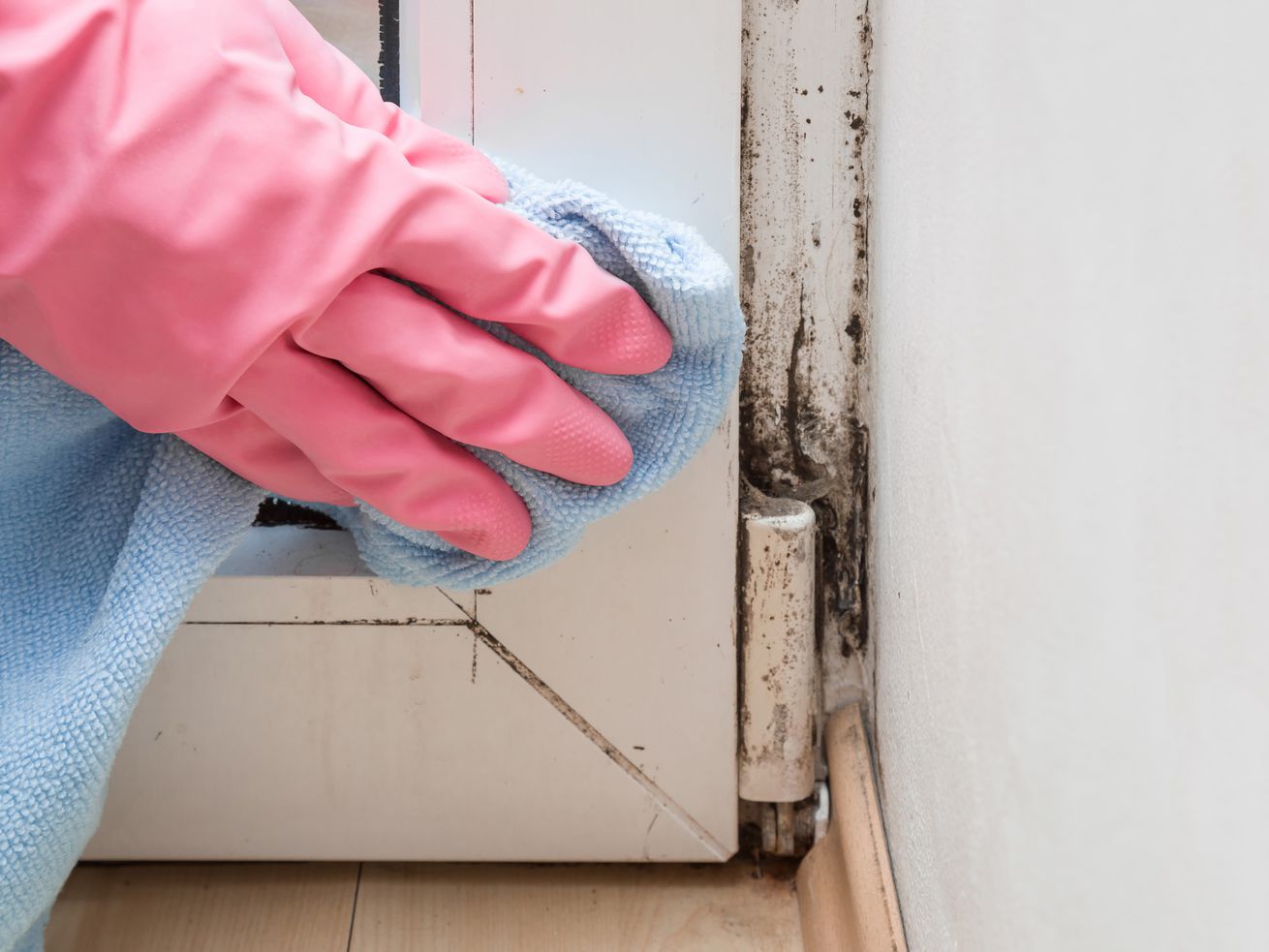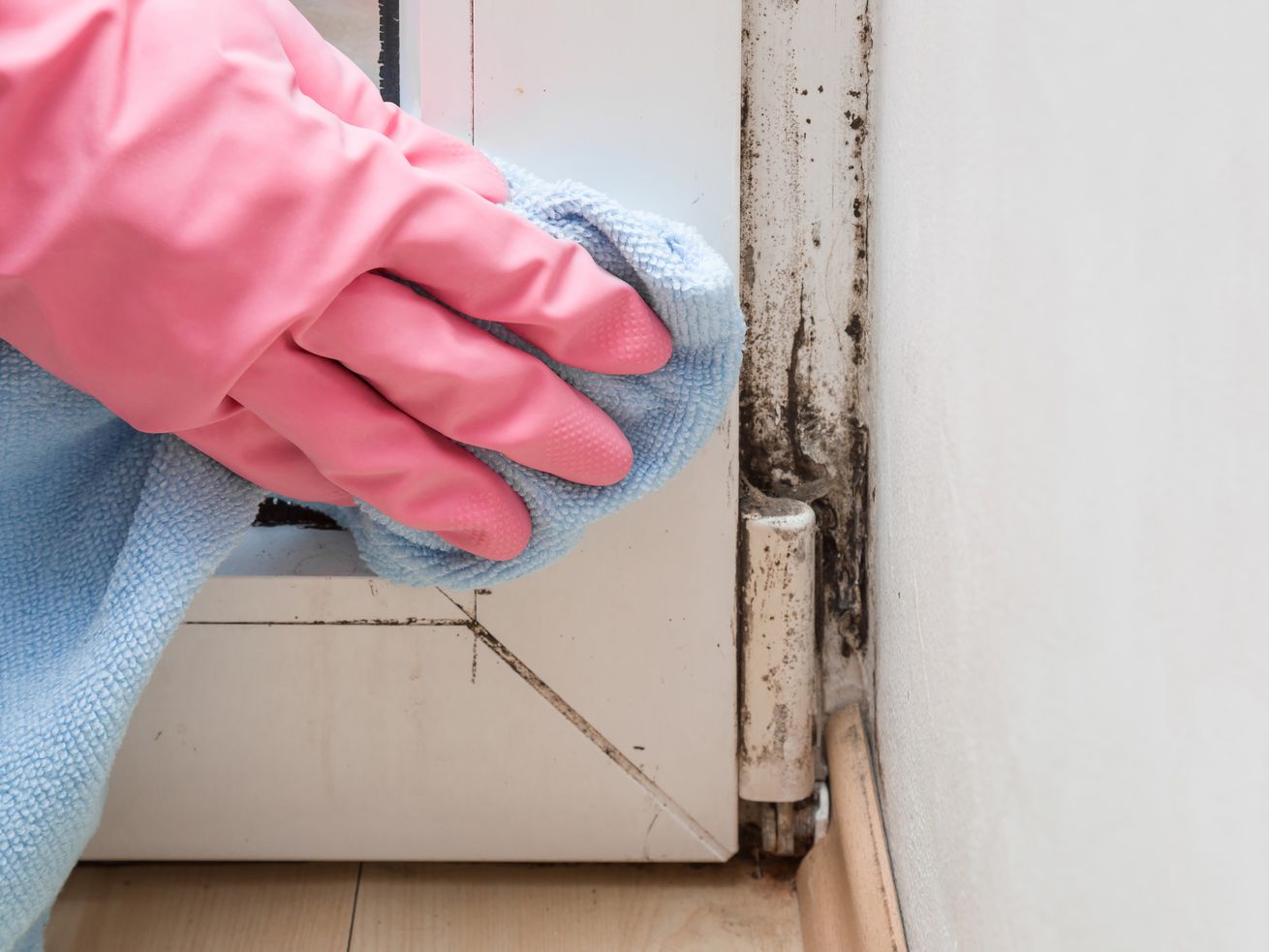How to Remove Mold From Wood

>

iStock
Mold commonly grows on wooden surfaces, as wood is very good at absorbing water. Add to this moisture warm temperatures and mold spores (which are always in the air), and it’s the perfect storm for a mold infestation. Read our guide to learn how to easily remove mold from wood.
The good news is that if the affected area is no larger than ten square feet and you aren’t dealing with toxic black mold, you can eliminate the mold yourself using everyday household cleaners. But don’t delay—holding off on this project will give the mold colony a chance to expand, and prolonged exposure can be bad for your health.
What if you’re dealing with black mold? It can be difficult to distinguish toxic black mold (Stachybotrys chartarum) from other species that are black in color, so it’s best to call in a professional in this situation. Toxic black mold is particularly harmful when inhaled, so you shouldn’t touch it.
How to Kill Mold on Wood
If you’re looking to remove any other kind of mold, here are the steps to take.
Step 1: Wear protective gear
It’s important to protect yourself when dealing with mold, as it can be dangerous if it’s inhaled or ingested.
While cleaning, make sure you wear goggles, a face mask thatcovers your nose and mouth, and rubber gloves.
Step 2: Vacuum the area
Use a vacuum with a HEPA filter to suck up any loose mold spores on or near the affected part of the wood.Run the vacuum over the area, then take the vacuum outdoors to dispose of the contents.Make sure the vacuumed material is tightly sealed in a plastic bag, so no spores can escape.
Step 3: Clean off the mold
If the mold hasn’t penetrated deeply into the wood, you can probably kill it. How do you kill mold on wood? With a simple cleaning solution of dishwashing soap and warm water.
Add a teaspoon of soap to a spray bottle filled with water and shake it up.Spray the affected area and use a soft-bristled brush to gently scrub away the mold, sponging up any excess liquid as you clean.Dry the surface completely with a towel.If that doesn’t work, try using distilled white vinegar, which kills more than 80% of mold species.
Combine equal parts vinegar and warm water in a spray bottle and spritz this solution on the mold.Let the solution dry for one hour, then wipe down the surface with a moistened cloth, followed by a dry towel.If the mold is still hanging on, it’s time to bring out the borax, which is an alkaline mineral salt cleaner that’s safer to use than bleach.
Combine a tablespoon of borax with a cup of water, then apply this solution to the mold with a soft-bristled brush.Scrub away the mold, leaving the borax solution in the wood. Don’t sponge up the excess liquid. You want as much of the solution in the wood as possible to prevent future growth.Run a fan or dehumidifier in the room to make sure the surface of the wood dries quickly and completely, with the Borax still under the surface.Note that bleach should not be used to kill mold found on wood. While bleach is very effective for killing mold on non-porous surfaces, it doesn’t work well when it comes to wood. This is because the chlorine in bleach can’t penetrate wood, so only the water portion of the bleach gets absorbed.
The mold may appear to be removed from the surface, but it’ll likely continue to grow underneath and return within a few months.
Step 4: If necessary, sand the wood
These cleaning solutions should take care of your mold problem, but if you’ve got some stubborn traces left under the surface, you have one last resort: sanding.
Use 100-grit sandpaper to rub out the affected portion, taking care not to sand away too much of the surrounding areas. Repeat Step 2 to remove the dust and any loosened mold spores.
Did you miss our previous article…
https://www.tampa-bay-homes-guide.com/?p=260
